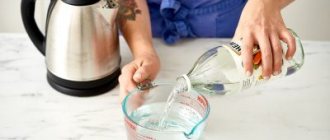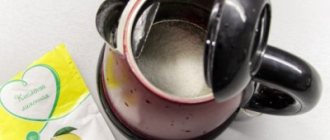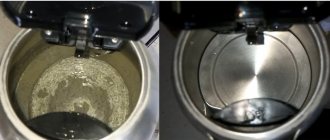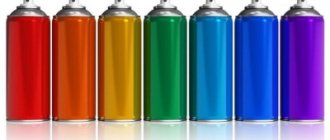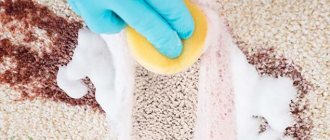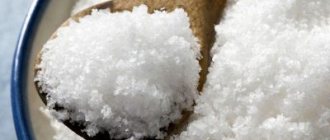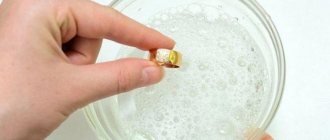Over time, if you do not clean, the layer of scale builds up and becomes hard. It is possible and necessary to remove lime from the bottom and walls of the kettle.
One of the easiest ways to remove scale from a kettle is to use baking soda and vinegar.
Can these cleaning products be used at home?
The sediment that appears as a result of boiling water is difficult to remove by simply washing the kettle. This is due to the fact that lime deposits are insoluble in water.
Even purchased purified water, like water that has passed through home filters, has a low level of mineralization and can also form sediment during the heating process.
Vinegar is an acid that reacts with sediment substances and destroys them. Soda is an alkali that helps loosen scale. With the simultaneous use of acid and alkali, the effect is enhanced and the plaque is destroyed.
Table vinegar and baking soda are food products that can be used to treat the inside surface of a kettle.
Useful tips
Dense scale deposits that have formed over time can be difficult to clean. They do not dissolve completely and scratch the surface of the kettle when trying to remove them.
There are several recommendations that will allow you to forget about harmful deposits and extend the life of the kettle:
- use special filters to clean and reduce water hardness;
- do not keep the water in the kettle constantly, but pour it into another container as it cools;
- Rinse the kettle daily under normal water;
- Clean the surface of the kettle once a week with regular soda.
Methods for cleaning a kettle with soda are among the most gentle. This substance does not damage the surface of the dishes, and when it gets into drinking water it is harmless to humans. In addition, soda is no less effective than most store-bought products, while it compares favorably in cost.
Recipes with additional ingredients may not be equally beneficial for different teapots. Before using them, you should make sure that they will not damage the surface.
Advantages and disadvantages of the method
The method of removing scale using available drugs such as soda and vinegar has many advantages, but there are also some disadvantages.
Advantages of use:
- harmless to health;
- affordable cost;
- availability;
- completely natural product, without chemical impurities;
- good effectiveness in untreated cases;
- ease of use.
Disadvantages of this method:
- there may be poor effectiveness the first time with a thick layer of scale;
- It takes time for the solution to work - the result is not immediate.
Despite some disadvantages, the use of soda and vinegar is a very effective method of removing scale.
Preventing the formation of limescale
Practice shows that scale forms when using any water. However, there is always the opportunity to slow down this process and make cleaning the kettle a rarer and easier procedure.
The walls of the device must be regularly wiped with a soft, soapy sponge. This helps in time to remove the salt layer that has not yet stuck to the surface.
When purchasing a new kettle, it is recommended to give preference to modern models in which the heating element is coated with a special material. It prevents excessive scale deposits and thereby protects the boiler from damage and increased energy consumption.
Procedure
To remove a thick layer of scale at home, you can use table vinegar and baking soda.
The procedure is not complicated:
- Pour ½ cup of vinegar into an empty container.
- Pour 1 tbsp. l. soda
- After the reaction is complete, add water to the full volume.
- Place on the stove.
- Boil for 30 minutes.
- Let stand until cool.
- Pour out the water.
- Rinse.
For particularly persistent deposits that have a layered structure and cannot be removed immediately, another method can be used. It is suitable for electric and regular kettles.
Stages of work:
pour water into the kettle, not reaching the top by about the volume of a glass;- bring water to a boil;
- add 3 tbsp. l. soda;
- remove from heat;
- let stand for 30 minutes;
- boil again;
- drain the water;
- wash the dishes;
- draw water;
- add ½ cup vinegar or 1 tbsp. l. vinegar essence;
- boil for 30 minutes;
- Wash the kettle using steel wool.
If there is only a small amount of plaque, then even a recipe based only on soda (without adding vinegar) will help. To implement it you will need:
- Pour water more than half the volume of the kettle.
- Pour 3 tbsp. l. soda
- Boil.
- Keep on fire for 30 minutes.
- Remove from heat.
- Leave for 60 minutes.
- Wash off the sediment using a brush.
With a thick layer of scale, a combination of soda and vinegar will help. In most cases, you will need to make several rounds of cleaning.
How to clean a teapot
Teapots get dirty periodically. Residues of tea leaves accumulate on their walls. To clean dishes, use baking soda. 1-2 tsp. place the substances on a sponge. Rinse the teapot and remove any remaining food from it. Treat the wet surface of the dish with a soft sponge and soda, then rinse the container.
If the stains are old, use another method. Apply a small amount of soda to the surface, then fill the substance with acid. After the sizzling stops, use a sponge to scrub the sides of the dish and rinse it thoroughly.
Top 3 alternative folk methods
In addition to vinegar and soda, other means will help to clean the surface of the kettle from scale.
Lemon acid
This method, based on the action of citric acid, can be used for cleaning both conventional and electric kettles.
Application steps:
- add more than half the volume of water;
- add 2 tbsp. l. acids;
- boil;
- let stand until completely cool;
- rinse using a sponge;
- rinse with water.
The effectiveness of this method is explained by the effect of acid on lime deposits in the kettle. Read more about descaling a kettle using citric acid here.
About the use of citric acid to remove scale in a kettle - video instructions:
Sweet soda
This method is not the most effective, but it can also show good results in untreated cases. To implement this, you will need sweet carbonated water, for example, lemonade, Sprite or another similar drink.
Process steps:
- Fill the kettle ½ or 2/3 full with sparkling water.
- Boil.
- Let stand until completely cool.
- Rinse with a sponge.
- Rinse with clean water.
Scale is affected by citric acid, which is present in carbonated drinks and gas.
Read more about descaling a kettle using Coca-Cola in this article.
Apple peelings
Apple peeling will help you deal with scale in a regular kettle. This method is suitable for metal and enamel cookware. For a thick layer of old deposits, this method may be ineffective.
Application:
- put the peelings into an empty kettle;
- to fill with water;
- boil;
- leave to stand for a couple of hours;
- remove cleaning;
- wash the inner surface with a washcloth.
The role of the substance in descaling
The effectiveness of using vinegar in removing known plaque is explained by a common chemical reaction: when acid reacts with scale, the components decompose into water, gas and easily soluble calcium acetate. An important catalyst that is responsible for accelerating decomposition processes is thermal exposure or prolonged soaking.
Heating or soaking leads to the destruction of the scale - it becomes loose. Some of the connections come away from the surface on their own; some will have to be removed using a soft sponge. If the coating was thick and the manipulations had no effect, boil the kettle with vinegar again.
Vinegar is not the only acid that effectively fights plaque. Other acids used in the kitchen are also suitable: for example, citric acid. But, if lemon or citric acid is not always available, then vinegar in different concentrations constantly lives in the kitchen.
Household chemicals, if all else fails
Products specifically designed for this purpose will help remove scale from a kettle and other utensils. You can buy them in household chemical departments.
Romax Boom
Antiscale preparation is intended for removing limescale from conventional and electric kettles. The product is available in liquid form in 300 ml bottles.
Application procedure:
- Pour water and product into the kettle. Proportion - based on the ratio - for every 1 liter. water – 200 ml Anti-scale.
- Stir the solution.
- Leave to stand (without heating) for 30 minutes.
- Pour out the solution.
- Rinse with a washcloth.
- Rinse.
The cost of one package is from 400 rubles. Manufacturer – Belarus. Do not use for cleaning enamel teapots.
Chistin Antiscale
This tool is inexpensive and easy to use. The powder is produced in disposable packages - sachets weighing 75 grams. It is possible to use Chistin to clean enamel and plastic surfaces.
Chistin is suitable for descaling not only teapots, but also irons, pots, boilers and other household utensils.
Application:
- pour 1 liter of warm water into the kettle;
- add the contents of Chistina;
- stir;
- set aside for 30 minutes;
- wash with a sponge;
- rinse.
Price – about 40 rubles for 1 sachet. The product is produced in the Russian Federation.
Antiscale
Antiscale products are produced by several companies in the Russian Federation, the price is about 20 rubles. These preparations are intended for descaling teapots.
Usage is very simple:
- Pour water - 2/3 of the kettle's volume.
- Add powder.
- Stir and leave to stand without heating for about 20 minutes.
- Drain.
- Rinse with a washcloth or brush.
- Rinse with clean water.
Do not use for enamel teapots.
Cleaning with soda, “grandmother’s” recipes
Soda with water
This method is suitable for electric and regular steel, enamel and teapots. To clean the kettle with baking soda, fill it 2/3 full with water and add 3 tablespoons of baking soda. Boil for 20 minutes. and leave for an hour. If the layer of scale is small, then this procedure is enough to make the kettle sparkle like new.
However, this method is not suitable for a thick layer of scale. Soda, of course, is a good leavening agent, not without reason, bakers use it, but it cannot completely remove limescale, although it makes it more porous and loose. The softened plaque can be scraped off with a metal mesh. Soda is often mixed with other ingredients: salt or acids (lemon, vinegar, citric acid), they enhance its effect.
Also read: how to clean your iron from scale.
Soda with salt
Pour a full kettle of water and add 2 tablespoons of soda and a spoon of salt, stir well and put on fire. There is no need to drain the boiled water; let it stand for 10-15 minutes so that the composition has time to dissolve the hard crust of scale.
Wash the inside of the kettle under the tap and remove any remaining deposits with a dish sponge. Rinse well and add fresh water, boil for a few minutes and pour out, repeat again to be sure to wash off any remaining scale.
This “home” method is quite effective; it was possible to wash off very thick layers of scale with its help; if the case is too advanced, then the process is repeated again or triple cleaning is used, which will be discussed below.
Soda and citric acid
This simple method is suitable for regular and electric kettles. Pour water and turn on the device, after adding 2 teaspoons of soda and citric acid for each liter. Let the water boil for 15 minutes and turn it off. While the water cools, citric acid and soda will destroy the layer of limescale.
After about an hour, drain the water and repeat the whole process again. This method gives good results even when other means are powerless. Rinse the inside of the kettle with water; if small islands of scale remain, rub them with a sponge. Boil clean water and drain to remove any remaining acid and alkali. If you have an electric kettle, inspect it carefully to see if all the scale has been removed from the heating element? Remove and rinse the mesh, put it back and you can use the device as usual.
Read: how to descale a kettle with vinegar.
Triple cleaning
To work, we need citric acid, soda and vinegar. The essence of the method is that the scale layer is alternately exposed to three different solutions, which makes this cleaning as effective as possible even in the most severe cases. So, let's begin:
- Fill the kettle with water and add soda to it at the rate of 1 tbsp. l. per liter The solution is boiled for one hour and poured out.
- Prepare a solution of citric acid, the proportions and exposure time are the same as for soda.
- For the third boiling, use table vinegar (100 grams per liter of water), when the solution has boiled for an hour, it is drained and the inside of the kettle is thoroughly washed. After this treatment, it shines clean, but smells disgustingly like vinegar.
- Before use, boil plain water in the kettle to get rid of the strong vinegar smell.
Soda Ash
Unlike baking soda, soda ash has a strong alkaline reaction, which makes it easy to dissolve limescale. In everyday life it is used for cleaning kitchen surfaces from old grease, for washing plumbing fixtures and tiles, for boiling laundry and softening “hard” water in washing machines.
- Prepare a working solution: dilute a tablespoon of soda ash in a glass of water.
- Pour 1 liter into the kettle. water and let it boil.
- Pour the solution into boiling water and turn off the gas.
- When the kettle has cooled down, take a sponge and clean the deposits by hand; the softened scale easily peels off.
- We rinse the vessel well under the running tap to wash away any remaining “chemical.”
- Fill to the brim with water, boil for a few minutes and drain. All. You can use it as usual.
Warning: Soda ash is a caustic alkali. Be careful to use rubber gloves and try not to inhale the light white dust that rises into the air when you try to scoop the powder into the spoon. This substance easily dissolves paper and old fat, entering the nasopharynx, causing unpleasant burns to the mucous membrane, and irritating the skin of the hands. Take care of your eyes. Keep the powder away from food products and out of the reach of children and pets.
What is scale and how does it affect the human body?
Scale is a limescale deposit found in drinking water. It is formed during the boiling process and remains on the walls of the kettle.
These deposits pose a danger to both the condition of equipment and human health:
- lead to overheating of the kettle material;
- make him break;
- When ingested through drinking water, they can cause urolithiasis.
Link. Lime is a dense formation. They cover the heating elements and prevent them from coming into contact with water. As a result, the kettle overheats at too high temperatures, which is one of the common reasons for its failure.
However, if you wash the kettle on time, this can be avoided.
